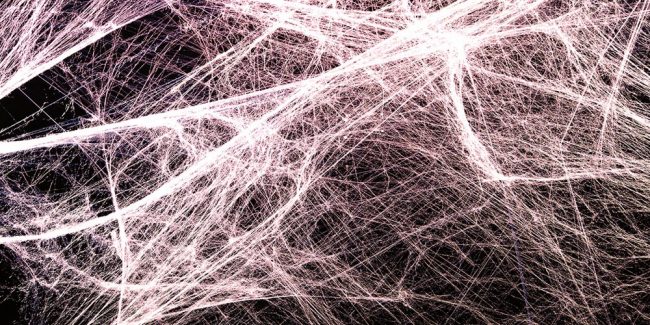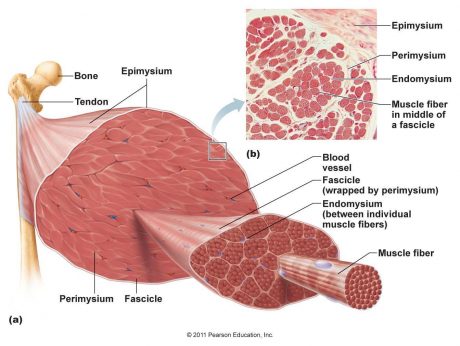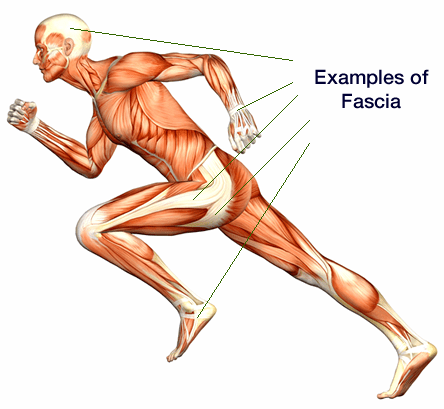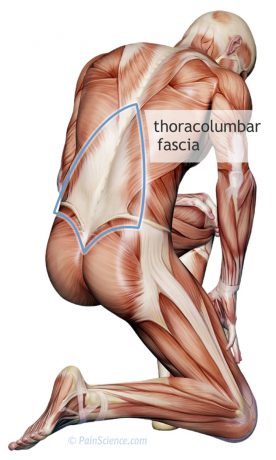What is Fascia?
Published on
29 Nov 2018


Written by
Emma Martel (Lee)
Consultant Physiotherapist
Call us on: (03) 9975 4133
Never heard of it? It’s an incredibly overlooked structure in our body that plays a key role in holding us together! When our fascial system isn’t functioning as optimally it should, it can manifest as tightness and pain, restricting our movement and making it painful to maintain good posture when we are sitting, standing, walking and running.
Fascia is our bodies connective tissue, providing the framework for our body. It runs continuously from our big toe to the top of our head, encapsulating our cells, each individual muscle fibre, each muscle, our bones, nerves, blood vessels and organs. It is EVERYWHERE!
What is fascia?
When our fascial system isn’t functioning as optimally it should, it can manifest as tightness and pain, restricting our movement and making it painful to maintain good posture when we are sitting, standing, walking and running. Fascial restrictions can even affect our organ function and impact our bodily systems, such as digestion. Some more obvious areas of fascia that you may have heard of are the plantar fascia (bottom of the foot) and iliotibial band or ITB (side of thigh).

What is fascia made of?
Our body is made up of 60-65% water, and the reason the water doesn’t end up as a puddle on the ground is because our fascia organises the water and other body tissues into a structured network. If your skin were the rind of an orange, your fascia would be the thick pithy layer below. The thin white layer encasing each orange segment would be like the fascia that envelopes your muscles. The fine layer that holds each orange juice droplet in place would be like your fascia, encasing individual cells in our body. Fascia is an incredible soft tissue as it functions to provide our body with a stable scaffolding but at the same time allows movement, flexibility and tissue adaptation to occur such as building bigger muscles, putting on weight or allowing your stomach and surrounding structures to make room for the food you eat.
Fascia comes in different forms to serve different purposes throughout the body, but the basic ingredients include collagen and ground substance. Collagen gives our fascia its structural mechanical properties and consists of closely packed bundles of wavy fibres that pull straight when under tension. Ground substance is a gel like substance a similar consistency to egg white. It fills in the gaps between the collagen and provides support, lubrication, moisture, nutrients and other important materials to our fascia.
Check out this amazing youtube video which magnifies fascia and demonstrates what a complicated web of tissue it is! https://youtu.be/uzy8-wQzQMY
What happens when fascia isn’t optimal?
When functioning optimally, our fascia will move, slide and glide with everything we do. When fascia is in a continually shortened position for prolonged periods from sedentary lifestyle and poor posture, it will adapt – shortening and tightening. Fascial restrictions can also occur from trauma, infection, inflammation or surgery as these ‘assaults’ impact the freedom of movement of our fascia, resulting in tension points, pain and compensation of surrounding tissues.

Fascial tightness, stretching or massage often feels like a burning sensation or poking on a bruise. If you have ever had a ‘deep tissue massage’, your therapist will have been working on your fascia.Our body is very good at making up compensation strategies to ‘get by’ if something isn’t working optimally. A fascial restriction in one body region such as the knee will result in forced compensation and suboptimal movement in the surrounding structures such as the hip and ankle. This may be in the form of twisting, excessive movement or lack of movement in a region, abnormal transfer of our weight when walking or running, gripping with certain muscles- the strategies are endless and our body can be very creative!
For example, an office worker who spends 50 hours a week at their desk with poor posture will often buildup tightness through their hip flexors, hamstrings, ITB (iliotibial band) and stiffness through their thoracic spine (mid back). If they were to get up and run 15km on the weekend, the above muscular and fascial tightness will pull their pelvis into a forward tilt, reduce their thoracic rotation during running, impact their stride length and create scissoring and rotation through their legs when they run.
Over time, this leads to additional strategies of compensation, creating a layering effect across large regions of the body. Our bodies can often push through the above compensations for a period, therefore pain or injury may not manifest immediately. This explains why pain or injury can sometimes pop up for ‘no reason’ or from a very small trigger. The body eventually reaches a point where it can’t keep going and injury may occur with a simple activity, causing pain and discomfort.

How can we help our fascia?
Posture: Maintaining optimal posture will help allow your spine to maintain a neutral position and will prevent buildup of fascial tightness. On the other hand, slouching or excessively upright posture will often result in fascial overload or tightness. Check out our article ‘Sitting Slouching vs Upright’ for guidance on how to sit optimally.
Self Release Techniques: There are lots of great ways you can lengthen and loosen your fascia at home such as using a foam roller or a spikey ball. Stretching and yoga are also fantastic ways of lengthening the layers and chains of fascia in your body. When you are stretching or during your yoga class, practice tuning into your body and the exact locations where you may feel your fascia pull or tether. This will help direct your spikey ball and foam roller release sessions, and improve your body awareness.
This is just the tip of the iceburg when it comes to fascia but the take home message is that:
- It is everywhere and therefore
- Everything you do impacts your fascia!
Jump on your roller, get back into yoga and start to tune into the little asymmetries and tension points. Fascia explains why your stiff big toe might be contributing to your neck pain, so don’t be surprised if your digestion improves when you take up yoga or if your headaches improve when you start stretching your calves- EVERYTHING IS CONNECTED!
We’re here to help.
If you are feeling tight, currently suffering from fascial problems or would like any more info, get in touch now!
About the Author
Emma Martel (Lee) — Consultant Physiotherapist
Emma values the importance of listening to her patients to fully understand their symptoms and treatment goals. Through skilled biomechanical analysis of the whole body, her objective lies not only in treating symptoms but identifying the true origin of the problem and working with her patients to prevent future episodes of pain and injury.
Back to blog home